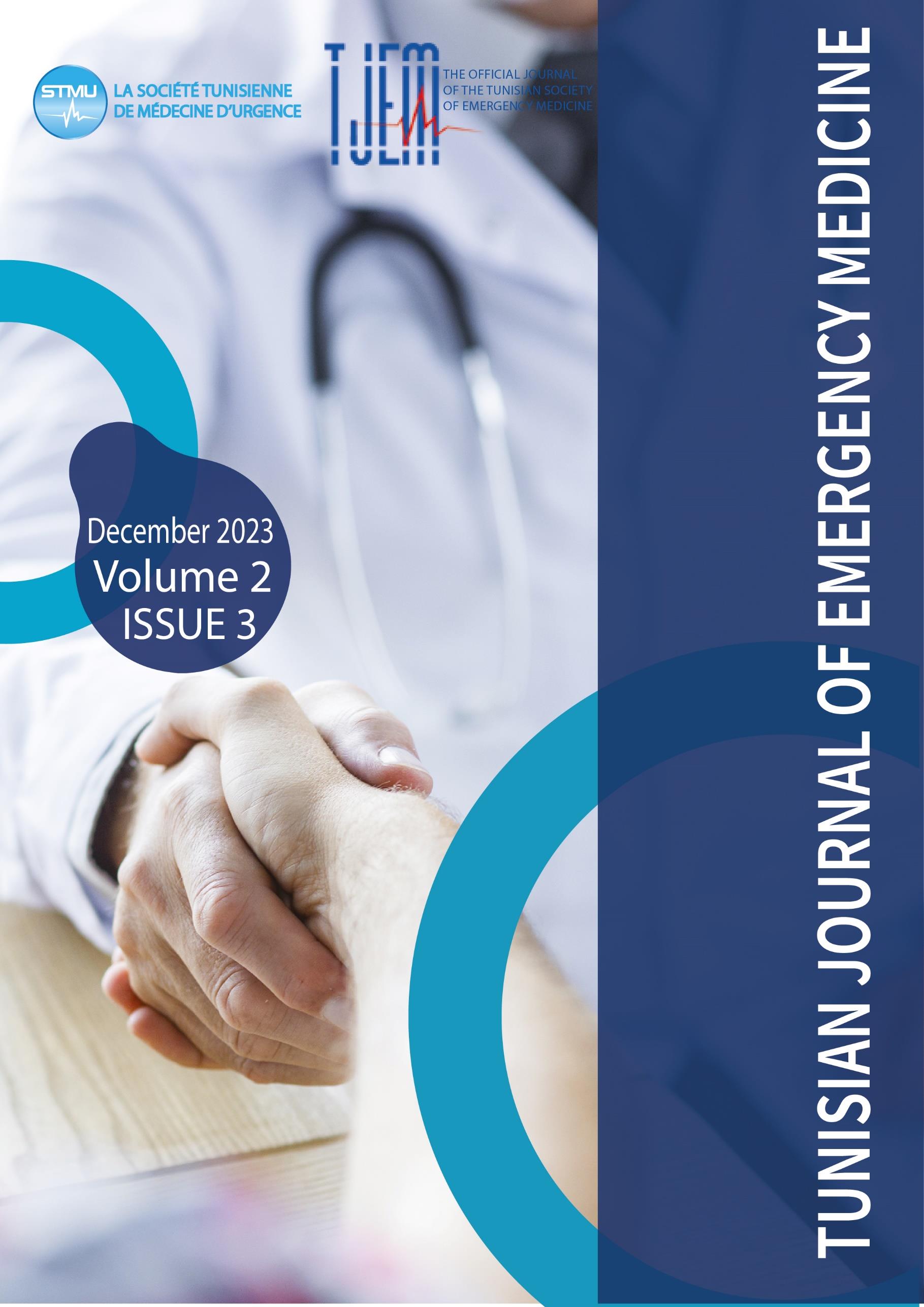Overview of the post-night shift syndrome in the COVID-19 pandemic era: predictors in a North African sample of physicians
Sirine Bouzid, Rim Karray, Amine Abdelhedi, Haifa Snoussi, Kais Bouzid,Mouna Jerbi, Abdennour Nasri, Olfa Chakroun-Walha, Noureddine Rekik.
DOI:
https://doi.org/10.0000/0frhjh83Keywords:
Post-night shift syndrome, Symptoms, covid-19, Predictive FactorsAbstract
OBJECTIVES: This study aimed to detect the post-night shift syndrome among physicians and to evaluate its predicting factors.
METHODS: Observational cross-sectional study involving physicians working night shifts during the study period (December 2019-February 2021). The post-night shift symptoms are divided into four dimensions: somatic, behavior, mood, and psychological.
RESULTS: Sixty-five participants have developed PNS syndrome (25.70%).
The independent predictors of developing PNS syndrome were working in a COVID-19 unit, the number of admissions, and the number of sleeping hours.
CONCLUSION: The night shift is a condition that primarily affects physicians. The PNS may cause several disorders and may decrease the physicians’ well-being. At the beginning of the COVID-19 pandemic, working in a COVID-19 unit was a predictor of the development of PNS syndrome.
Downloads
Published
Issue
Section
License
Copyright (c) 2023 Tunisian Journal of Emergency Medicine

This work is licensed under a Creative Commons Attribution-NonCommercial-ShareAlike 4.0 International License.
How to Cite
Similar Articles
- Faten DHOUIB, Aimen Dammak, Faiza Safi, Fatma MHIRI, zied CHAARI, Successful Conservative Management of Penetrating Cervical Tracheal Injury: A Case Report , Tunisian Journal of Emergency Medicine: Vol. 3 No. 1 (2025): TJEM 2025: Vol.3 Issue 1
- Rym KARRAY, Headaches and COVID-19 Infection: Epidemiology and Outcomes in a North African Sample , Tunisian Journal of Emergency Medicine: Vol. 2 No. 2 (2022): TJEM Vol2 Issue2
- Neila MAAROUFI, Youssef Zouaghi, Khaoula Amdouni, Sabra Ouaz, Beligh Oueslati, Moufida Nouari, Beyond the Rash: The Fatal Consequences of Lyell Syndrome , Tunisian Journal of Emergency Medicine: Vol. 3 No. 2 (2025): TJEM 2025: Vol.3 Issue 2
- Dorra Loghmari , Epidemiological and prognostic factors associated with road traffic accidents occurring in the Center East of Tunisia. , Tunisian Journal of Emergency Medicine: Vol. 2 No. 3 (2023): TJEM Vol2 Issue3
- Mounir Hagui, Sonia Slimi, Riadh Allani, Civil-Military Collaboration for health emergency preparedness , Tunisian Journal of Emergency Medicine: Vol. 2 No. 4 (2024): TJEM Vol2 Issue4
- Safia OTHMANI, Prognostic factors of assault-induced stab wounds in the emergency department , Tunisian Journal of Emergency Medicine: Vol. 2 No. 2 (2022): TJEM Vol2 Issue2
- Neila MAAROUFI, Firas Kessentini, Sabra Ouaz, Meriem Jemili, Moufida Nouari, Jihen Lakhal, Bilateral ptosis caused by midbrain hemorrhage: a case report , Tunisian Journal of Emergency Medicine: Vol. 3 No. 1 (2025): TJEM 2025: Vol.3 Issue 1
- Houda BEN SOLTANE, A total volvulus of the small intestine on malrotation A total volvulus of the small intestine on malrotation A total volvulus of the small intestine on malrotation A total volvulus of the small intestine on malrotation A total volvulus of the small intes , Tunisian Journal of Emergency Medicine: Vol. 2 No. 3 (2023): TJEM Vol2 Issue3
- olfa DJEBBI, Can we predict the clinical scenario of acute heart failure based only on NT proBNP rate without using echocardiography? , Tunisian Journal of Emergency Medicine: Vol. 2 No. 3 (2023): TJEM Vol2 Issue3
- Hanen GHAZELI, Kahler's disease revealed by acute pancreatitis: A case report , Tunisian Journal of Emergency Medicine: Vol. 2 No. 3 (2023): TJEM Vol2 Issue3
You may also start an advanced similarity search for this article.
Most read articles by the same author(s)
- Fatma MHIRI, Aimen Dammak, Faiza Safi, Oumaima KHARDENI , Faten DHOUIB, Olfa chakroun-walha, Diagnostic Challenges and Treatment Strategies in Axillary Trauma: A Case Report , Tunisian Journal of Emergency Medicine: Vol. 2 No. 4 (2024): TJEM Vol2 Issue4
- Olfa chakroun-walha, Cade oil poisoning in pediatrics: about 12 cases , Tunisian Journal of Emergency Medicine: Vol. 2 No. 3 (2023): TJEM Vol2 Issue3
- Olfa chakroun-walha, Acute myocarditis complicating severe chloralose intoxication: A case report , Tunisian Journal of Emergency Medicine: Vol. 2 No. 3 (2023): TJEM Vol2 Issue3
- Olfa chakroun-walha, Orchis satyrium; an intoxication by a medicinal herb , Tunisian Journal of Emergency Medicine: Vol. 2 No. 2 (2022): TJEM Vol2 Issue2

